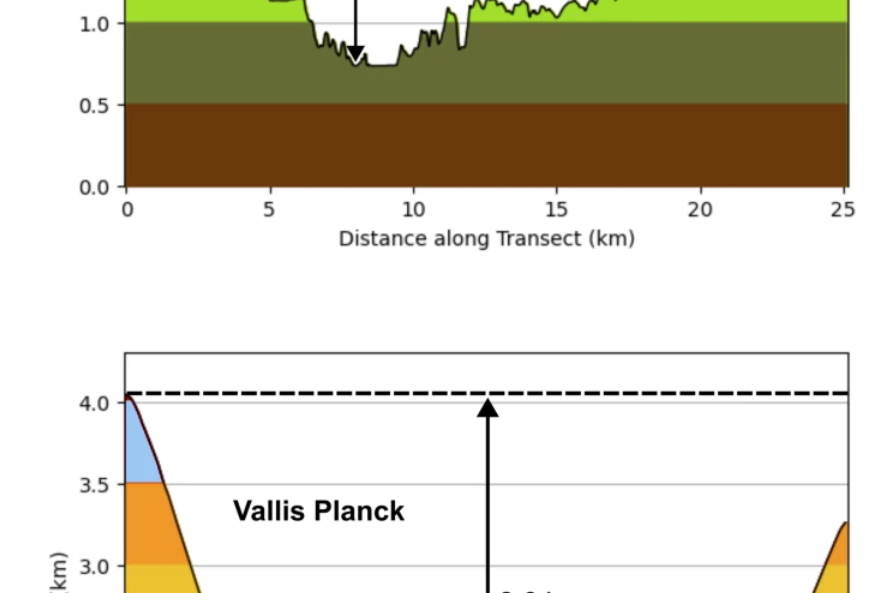
Two gorges on the Moon that are deeper than the Grand Canyon were carved out in less than 10 minutes by space rocks travelling at the speed of a bullet, astronomers have revealed.
The Moon canyons, which are located in the Schrödinger impact basin, formed roughly 3.8 billion years ago when rocky debris from an asteroid or comet struck the lunar surface.
Measuring 2.6 kilometres at its deepest point, the Vallis Planck gorge is roughly 800 metres deeper than the Grand Canyon in Arizona.
New observations from scientists at the Lunar and Planetary Institute of the Universities Space Research Association in Houston suggest the impact of the space rocks was around 130 times greater than the combined energy potential of all the world’s nuclear weapons.
Unlike the sudden appearance of the Moon canyons, the Earth’s Grand Canyon formed over millions of years as the Colorado River gradually eroded through the rock.

Using data from Nasa’s robotic Lunar Reconnaissance Orbiter spacecraft, the researchers were able to estimate that the debris was travelling at speeds of around 3600 km per hour –similar to that of a bullet.
“When the impacting asteroid or comet hit the lunar surface, it excavated a tremendous volume of rock that was launched into space above the lunar surface before it came crashing back down,” said geologist David Kring from the Lunar and Planetary Institute of the Universities Space Research Association.
“Knots of rock within that curtain of debris hit the surface in a series of smaller impact events, effectively carving the canyons. Adjacent to the canyons, the debris would have covered the landscape.”
The revelations will assist future lunar exploration, with the Schrödinger impact basin located close to the destination of the first astronauts taking part in Nasa’s Artemis mission to the Moon.
“Because debris from the Schrödinger impact was jettisoned away from the lunar south pole, ancient rocks in the polar region will be at or close to the surface, where Artemis astronauts will be able to collect them,” Dr Kring said.
“Thus, it will be easier for astronauts to collect samples from the earliest epoch of lunar history.”
The Moon canyons were detailed in a paper, titled ‘Grand canyons on the Moon’, published in Nature Communications on Tuesday.







